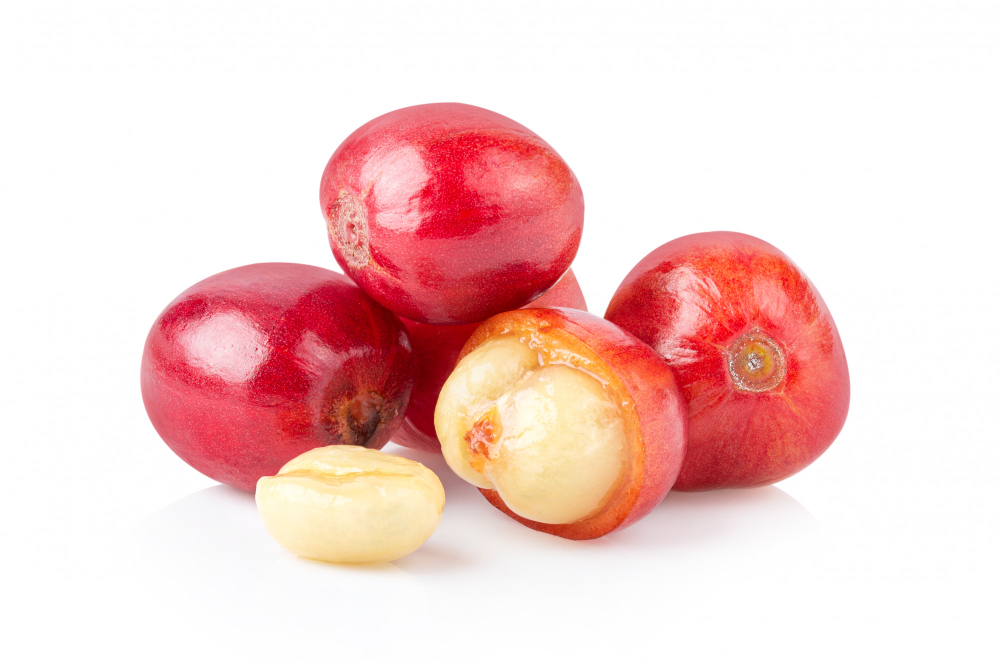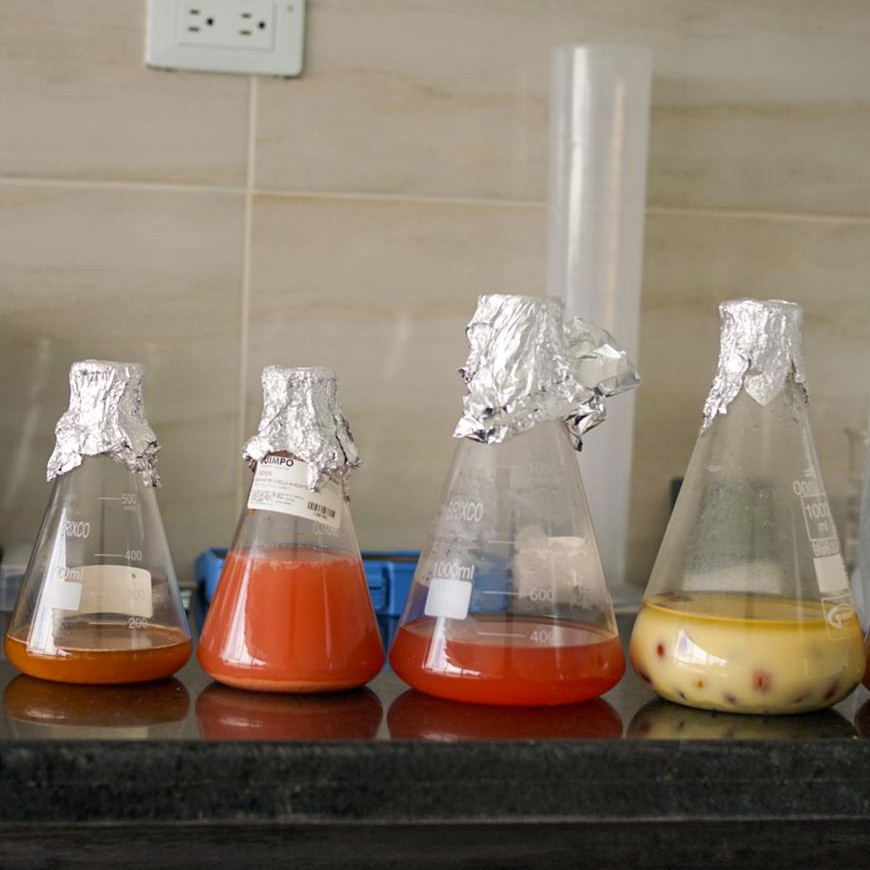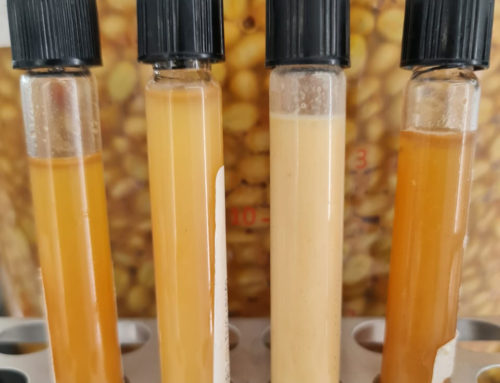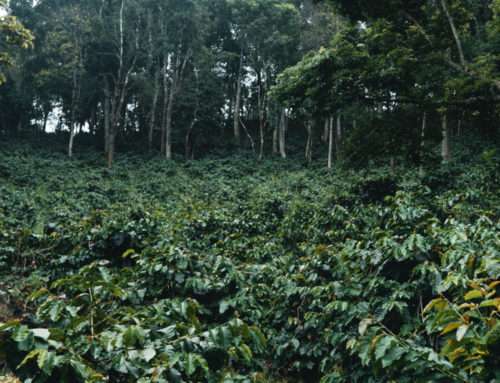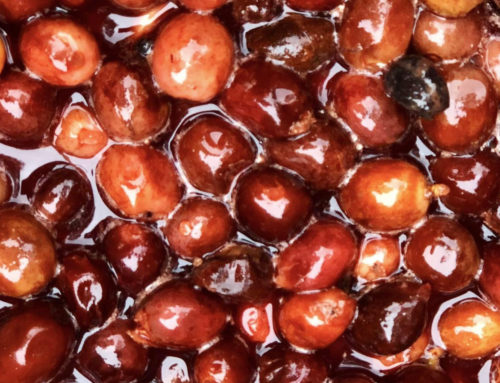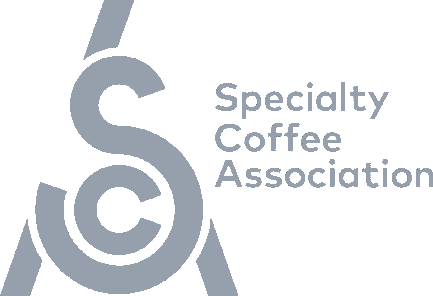Thermal Shock in Coffee: 8 Things You Should Know
The coffee production does not stop innovating and experimenting with new processes that can lead us to enjoy increasingly better and more unique cups.
Thermal shock is one of these processes that has been pioneered and implemented by various coffee producers.
Read on and find out what the process of thermal shock in coffee consists of and how it can contribute to obtaining unique and more consistent cup profiles.
1. Thermal Shock: A unique coffee processing technique inspired by other applications in the agroindustry
Pasteurization and blanching are processes commonly used in agribusiness.
Pasteurization is carried out on liquid products such as milk, wine, beer, sauces and fruit juices. Its objective is to reduce the populations of undesirable microorganisms present in food to levels that are safe for human health. Additionally, pasteurization allows the food to remain in good condition for a longer period of time.
This is achieved by exposing the food or product to temperatures between 60 and 80°C for a short period of time ranging from 1 or 2 seconds to a maximum of 3 minutes depending on the method used. After heating, rapid cooling is necessary to prevent the food from cooking and changing its organoleptic characteristics.
Unlike pasteurization, blanching does not seek to reduce microorganism populations. Rather, it stops the enzymatic processes that occur in food cells during the normal maturation and decomposition processes that lead to changes in the color, texture and flavor of the food.
2. Thermal shock in coffee is not a type of fermentation
Today more than ever coffee producers, baristas and roasters are focused on exploring unique coffee profiles.
By controlling certain conditions during the process it is possible to obtain cups of very good quality, differentiated and more consistent.
If you want to learn more about coffee fermentation, we invite you to read our post COFFEE FERMENTATION: 8 THINGS YOU PROBABLY DO NOT KNOW.
In this case it is important to highlight that thermal shock is not a type of fermentation.
It is an additional procedure that can be carried out at different stages of the coffee process according to a previously tested and established protocol.
In fact, some protocols include thermal shock as a process prior to pulping the cherries. Other protocols use it as a process prior to the fermentation of whole cherries or pulped beans. Others apply thermal shock during the drying process of already fermented coffee beans.
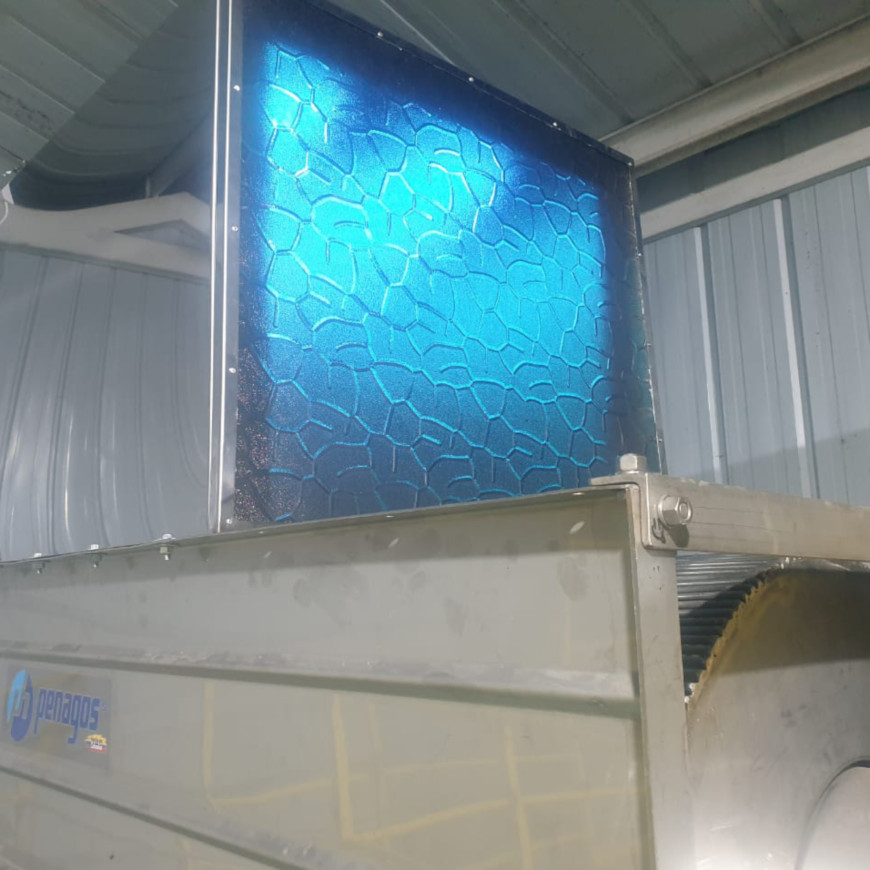
UV Sterilization. Courtesy: Wilton Benitez, Granja Paraiso 92.
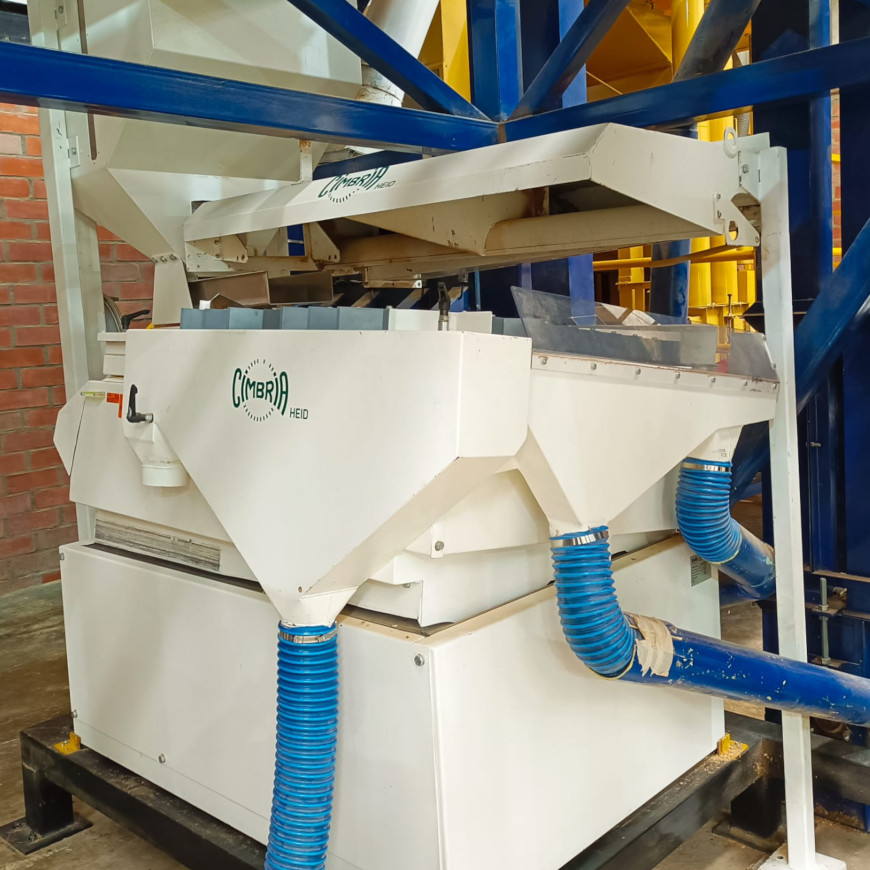
Beans classification. Courtesy: Wilton Benitez, Granja Paraiso 92.
3. Temperature and fermentation processes
Fermentation processes involve microbial complexes in which yeasts and lactic acid bacteria are the microorganisms that generate a more positive sensory impact.
They act by degrading sugars and converting them into alcohol, organic acids such as acetic and lactic acid, and CO2. In this process, temperature plays a very important role.
In general, when a fermentation process occurs in uncontrolled environmental conditions, it starts at room temperature. As the hours go by, the temperature increases while the microorganisms degrade the sugars.
The microbial populations change in such a way that they overlap in time. Each population will act within a specific temperature range and on specific types of compounds, generating different kinds of by-products.
These by-products of microbial biosynthesis are precursors of volatile aromatic compounds that will ultimately be responsible for giving coffee its acidity, body, flavor and aroma characteristics.
The wine industry has studied for years the fermentation processes and how temperature can be controlled to obtain characteristic and desirable flavors and aromas.
Temperature affects the sensory profile of fermented beverages
In the wine industry, it has been found that when fermentation occurs at a temperature of 15°C, the formation of volatile compounds associated with fresh and fruity aromas is promoted. At 28°C, floral and tropical fruit aromas such as banana and pineapple are accentuated instead.
Therefore, more attention was placed on the selection of yeast strains adapted to lower temperature ranges between 13 and 15°C.
This allows wine producers to create wine profiles according to consumer preferences by controlling fermentation temperatures and the microbial strains involved in each phase of the process.
In the case of coffee, work has also begun in this direction, hence the importance of controlled fermentation processes.
As with wine, in coffee, it has been demonstrated that the optimum temperature for yeasts to metabolize the sugars in the mucilage is between 30 and 40°C (86 and 104°F).
But when fermentation occurs at lower temperatures, the amount of acetic acid produced decreases, and cleaner flavors, complex acidity and fruity and floral profiles are obtained. Higher temperatures develop exotic tropical fruit flavors and tartaric acidity.
All this work done in the field of wine fermentation has led to experimentation with thermal shock, after which it is possible to carry out coffee fermentation at low temperatures with the inoculation of selected microbial strains.
This avoids the formation of acetic acid and favors the formation of desirable flavor and aroma precursors that are not formed during a conventional fermentation process.
4. Thermal shock can be applied at different stages of the coffee processing
Coffee cherries carry with them a microbial load from cultivation, in which beneficial microorganisms are combined with others that on the contrary are undesirable.
Undesirable microorganisms are those whose action in the coffee fermentation process causes the development of unpleasant flavor precursors in the coffee beans.
The thermal shock applied to freshly harvested cherries reduces the populations of undesirable microorganisms.
Once the cherries are sanitized, it is possible to inoculate previously selected microbial strains which are in turn the ones that work during the fermentation process of the beans.
In this way, it is possible to highlight the genetics of each coffee and intensify flavours and aromas already present in the beans, in order to obtain very characteristic cup profiles.
If you want to know more about how microorganisms influence the development of flavors and aromas of coffee visit our post MICROORGANISMS: The key to differentiated coffees.
In general terms, a coffee processing protocol that includes the thermal shock prior to the pulping of the cherries is carried out in the following manner:
- Harvesting of the cherries at the optimum point of maturity
- Selection of the cherries by size and density, allows us to discard empty, immature, and dry berries. At the same time, an initial disinfection of the cherries is carried out with ozone and ultraviolet rays.
- Application of thermal shock to eliminate the microbial load that the cherries carry from the field.
- Pre-fermentation of the cherries with inoculation of selected microbial strains.
After the last step, the producer will follow the process according to his specific protocol. For instance, the producer could proceed either by pulping followed by a second controlled fermentation followed by washing and/or drying of the berries, or by taking the cherries directly to the drying process to obtain a natural coffee.
Here you can find a small summary of the benefits of the Thermal shock technique:
- Brighter flavors
- Consistent profiles
- Destroys unwanted enzymes
- Sanitized cherries
- Can be combined with any fermentation protocol
- Enhances varietal genetics
- Less astringency
- Better preservation of cherries = longer shelf life
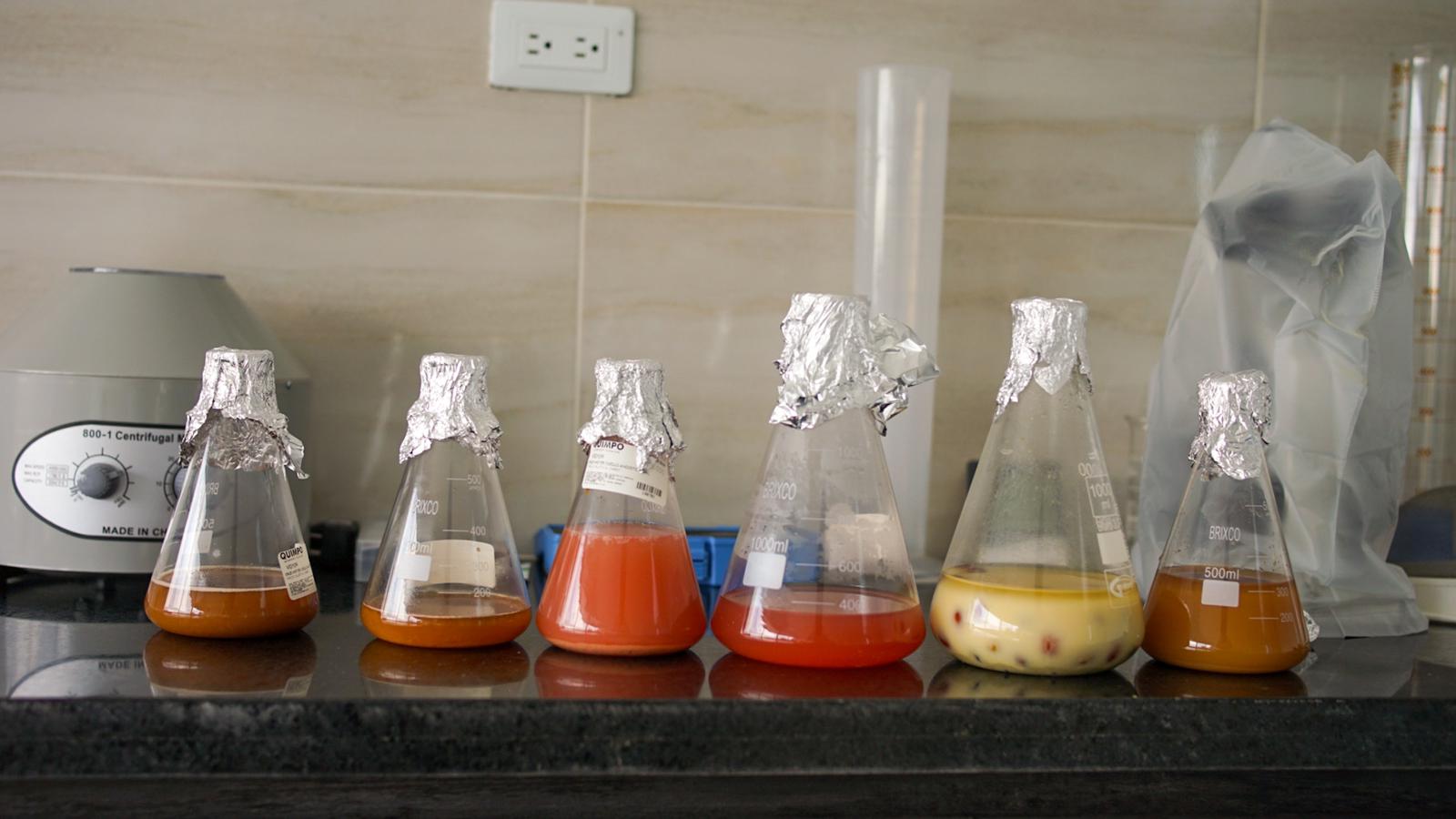
Microorganisms specially grown in Granja Paraiso 92 laboratory. Courtesy: Wilton Benitez, Granja Paraiso 92.
5. Temperature and exposure time are key to succeed
Blanching or pasteurization protocols in agribusiness are adjusted depending on the particular characteristics of each specific product as well as on the total volume to be treated in each batch, and the size of the fruits and their consistency.
In the case of coffee it is very important to preserve the viability of the seed embryo after the thermal shock. Therefore, the time of exposure to heat and the temperature of the water are variables that each producer must adjust, always bearing in mind that a scalding time of 3 minutes with boiling water causes the death of the coffee seed embryo.
When the embryo dies the shelf life of the dried coffee bean decreases and its flavor and aroma qualities are totally spoiled. Therefore, it is always better to perform the thermal shock in coffee with water at a temperature of 85°C for brief periods of 30 seconds followed by cooling.
Each producer should decide the number of times that the process can be repeated until the desired conditions of innocuousness are obtained without compromising the integrity of the embryo of the coffee beans.
On the other hand, if water temperatures and exposure times are not adequately controlled there is a risk of inducing accelerated enzymatic and oxidative changes in the coffee cherries that will give rise to acetic fermentation, which will produce very unpleasant cup flavors as a final result.
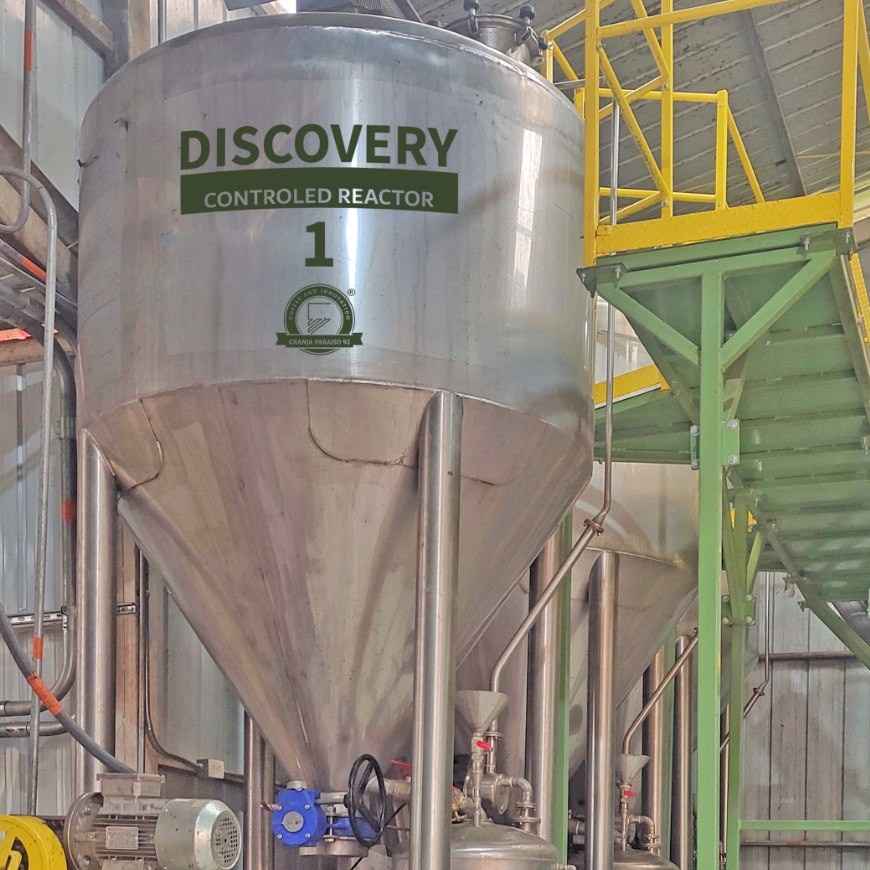
Bioreactor for controlled fermentation. Courtesy: Wilton Benitez.
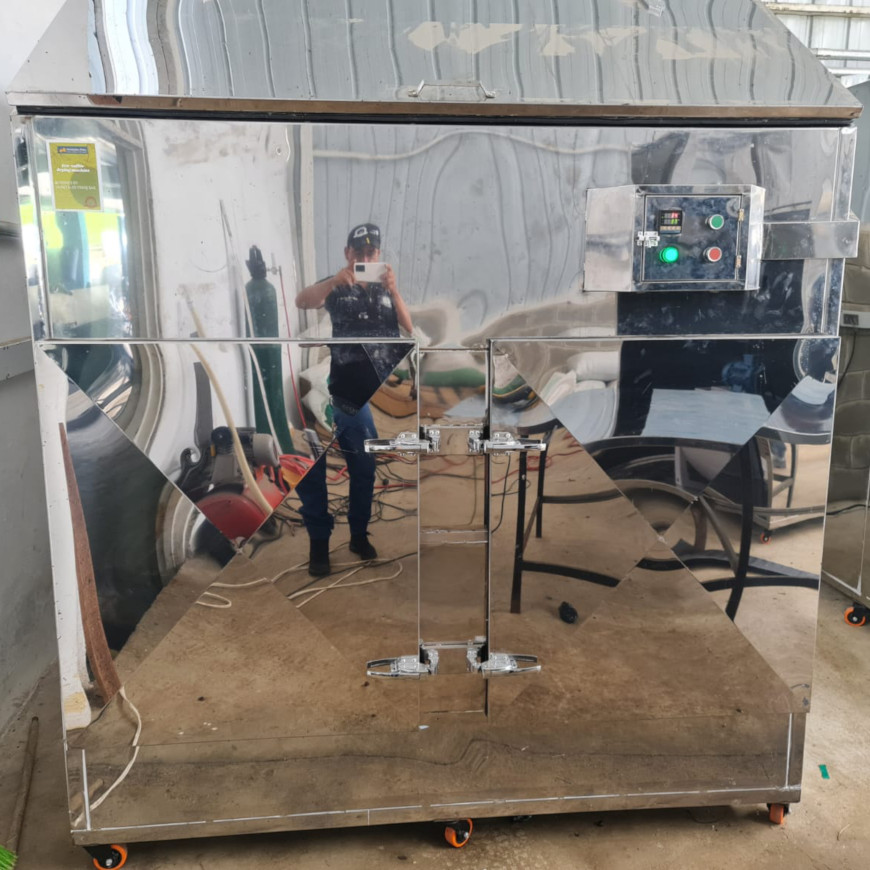
Ecological mechanical drying. Courtesy: Wilton Benitez, Granja Paraiso 92.
6. Thermal shock induces the formation of flavor and aroma precursors in coffee cherries
During thermal shock, biochemical changes occur in coffee cherries. Heat causes the destruction of enzymes such as catalase, pectinase and peroxidases which are responsible for accelerating the fermentation process of the bean.
By eliminating their action, it is possible to reduce the oxidation processes, thus increasing the shelf life of the coffee beans.
Furthermore, being able to inoculate specific microbial strains to carry out the fermentation process implies a greater control over the type of enzymes that will be produced.
This in turn influences the specific fermentation processes to be promoted, such as lactic or malic fermentation, which can give the cup of coffee a more fruity character.
If you want to know more about lactic acid fermentation in coffee click here.
If the fermentation of the coffee mass after the thermal shock is carried out in a controlled and anaerobic manner it is possible to accentuate the flavors even more.
This happens because inside the bioreactors, as the coffee ferments, the concentration of CO2 inside the tank increases which causes a pressure increase. This increase in pressure forces the juices of the detached mucilage containing flavor and aroma precursors to penetrate the structure of the bean.
Ultimately, this results in more intense flavors and aromas.
Some results show that the thermal shock combined with controlled (anaerobic) fermentation protocols may allow to obtain sweeter cups with exotic fruity and less astringent flavors.
7. Thermal shock in coffee is a process that requires specialized equipment
Thermal shock in coffee can be carried out in two ways: by immersion in hot water in a boiler or by injection of steam into the coffee mass.
In either case it is necessary to have bioreactors where the temperature and exposure time can be controlled. It is also necessary to remove the cherries from the hot process quickly in order to subject them to the cooling process.
The cooling process is carried out by immersion in clean water at a temperature between 5 and 15°C.
Everything will depend on the specific protocol designed by the producer and the volume of the coffee mass being treated.
If the volume of coffee is very large, it is best to opt for water at 5°C so that the coffee mass can be cooled in the shortest possible time.
In this case it will also be necessary to think about the equipment for cooling the water.
If, in addition, a controlled anaerobic fermentation is to be carried out, it will be necessary to have bioreactors suitable for this purpose.
And with the necessary equipment to monitor the change in enzyme levels, pH and Brix degrees of the mucilage to determine when the fermentation process should be terminated.
All this leads us to conclude that applying the thermal shock process correctly is complex.
And it must be coupled to a very strict controlled fermentation process if differentiated and consistent cups are to be obtained over time. This requires specialized equipment and trained personnel to monitor and carry out the processes.
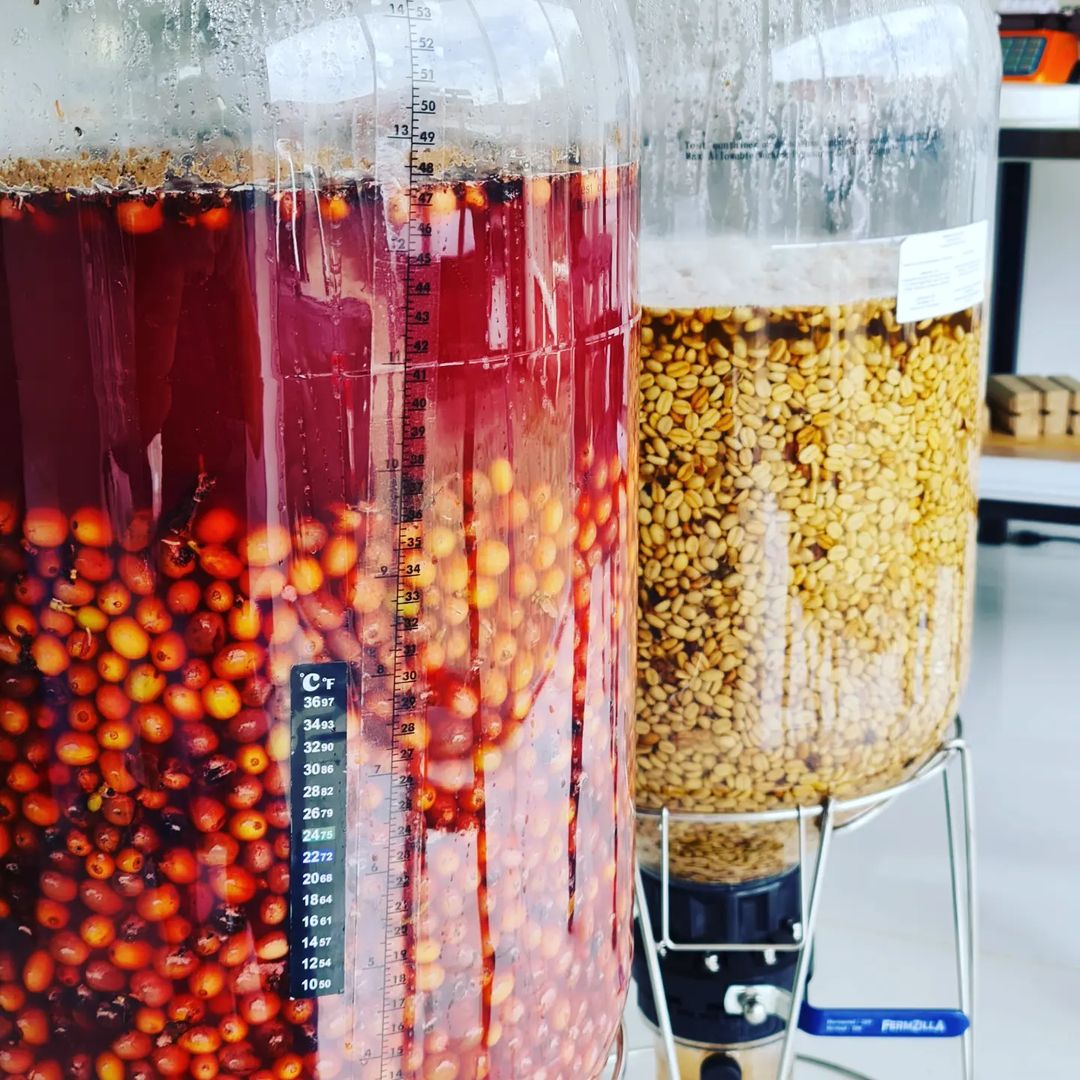
Controlled fermentation with inoculated yeasts. Courtesy: Wilton Benitez, Granja Paraiso 92.
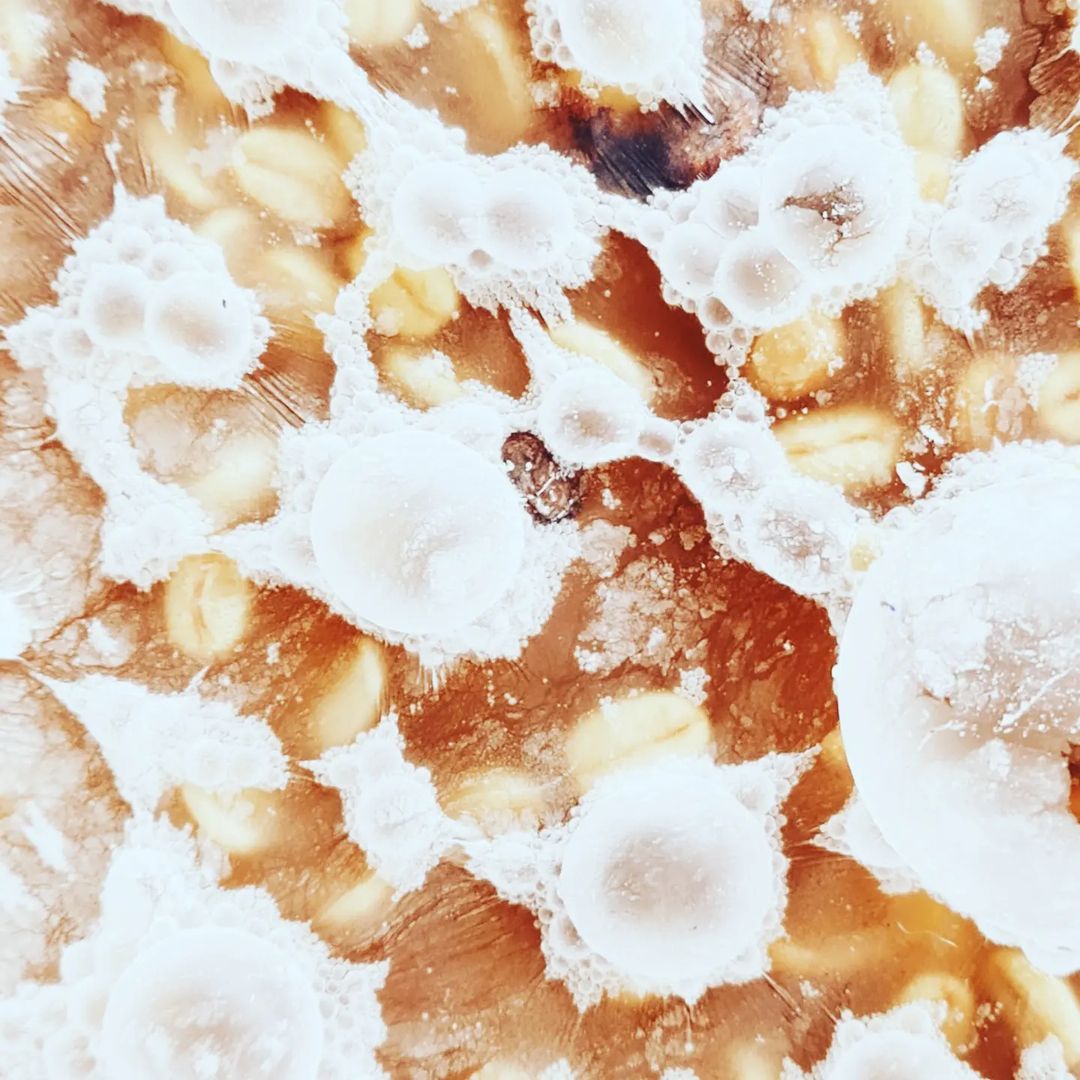
Yeasts for controlled fermentation. Courtesy: Wilton Benitez, Granja Paraiso 92.
8. The applications of thermal shock in coffee processing are just beginning to be explored
Up to this point we have focused on describing in general terms the protocol of thermal shock coupled with anaerobic fermentation processes. While there are several pioneers in the application of thermal shock in coffee processing protocols, the applications of thermal shock in coffee processing are just beginning to be explored.
As an example, here is one of Thermal Shock protocols applied to coffee:
- Harvesting overripe cherries when the mucilage has a high Brix concentration.
- Flotation of the harvested cherries in tanks with water and ozone to disinfect them and eliminate the floats (pasillas).
- First fermentation inside bioreactors with CO2 injection.
- Collection of the coffee honey waters (mieles de café) produced during the first fermentation.
- Inoculation of the coffee honey waters collected from the first fermentation with specific indigenous microorganisms that have been isolated and selected from coffee cherries.
- Anaerobic fermentation of the inoculated honey waters in bioreactors.
- Pulping of coffee cherries.
- Mixing of the pulped coffee cherries with the previously fermented mucilage in bioreactors where the third fermentation takes place.
This fermentation is carried out with constant and slow agitation at low temperatures for 120 hours until a pressure of 20 psi is reached inside the fermentation tanks. - Thermal shock by increasing the temperature inside the bioreactor to 40°C for a short period of time which allows the mucilage juices to penetrate the bean structure.
- Washing of the coffee beans with cold water at 12°C.
- Slow drying of the coffee beans at low temperature inside a dehydrator where CO2 or nitrogen is injected to slowly eliminate the humidity of the bean while avoiding the formation of molds. In this way the coffee beans are not exposed to oxidation processes nor are the flavor and aroma precursors destroyed by the effect of heat.
Conclusions
There is still much that to discover and explore in the exciting world of coffee processing, and the possibilities of creating differentiated coffees and different protocols of controlled fermentation and thermal shock in coffee processing are almost infinite.
However, a high degree of knowledge and investment in infrastructure as well as in specialized human talent is required in order to achieve consistent and replicable results. This combined with the fact that these processes are complex imply to a certain degree that these processes are not within the reach of every coffee producer.
But those with the possibility of successfully carrying them out will undoubtedly have an outstanding place for their coffee within the market of differentiated and exotic coffees.
Tell us if you already knew all these details on thermal shock in coffee, or if you have any particular experience you want to share. We invite you to subscribe to our blog so that you can be informed about new articles and updates on the exciting world of coffee.
Sign up to our newsletter receive monthly articles and updates on the exciting world of coffee, as well as offers from producers.
